Famed British actor and Star Trek captain, Patrick Stewart, brings a solo performance version of Dickens' classic tale to Broadway.

One of the most enduring and iconic tales of the Christmas season comes from famed British writer Charles Dickens. His 1843 novel, A Christmas Carol, would become his most famous work, and the character of Scrooge is part of our lexicon now, being synonymous with someone who doesn’t enjoy the holidays.
With many so stage and screen adaptations of this story, it surprised me to find out that its first appearance on Broadway wasn’t until 1981—a musical by Michael Legrand and Sheldon Harnick. Famed British actor and Star Trek captain, Patrick Stewart, would bring a one-man version of Dicken’s Classic to Broadway four different times at four different theaters, with the last time being in 2001 at the Marquis Theater.
So far, Closing Night episodes have focused on various musicals that played at the Marquis, but for this bonus holiday episode, we’ll explore the inspiration and evolution of a play adaptation—from the development of the script to the various Broadway productions and why the one at the Marquis in 2001 was so special. It's a testament not only to the enduring magic of storytelling but also to the unwavering dedication of a masterful actor to recapture the Christmas spirit.
Though Closing Night finished its first season, there's still a few shows from the Marquis Theatre that I want to take a quicker look at. So in a special mini-episode we look at Patrick Stewart's journey of bringing A Christmas Carol to Broadway. This is the transcript of that story, and it has only been slightly edited for this format. You can listen to the full episode here or on your favorite podcast app:
THE DICKENS STORY
The genesis of Charles Dickens' timeless holiday classic A Christmas Carol can be traced back to the fall of 1843 when the celebrated author of Oliver Twist and Nicholas Nickelby found himself at a creative and financial crossroad. Struggling with looming debts, Dickens faced the daunting prospect of reduced pay from his publishers. Married with a fifth child on the way and burdened by his father's financial troubles, Dickens was driven by the urgent need for a successful book that could alleviate his financial woes. But what to write about…?
“In 1843, Dickens was horrified by reading a Government report. It was, in fact, the second parliamentary report—The Parliamentary Commission on the Employment of Women and Children—showing the horrific conditions under which very young children were made to work underground or to work tremendously long hours in appalling conditions in factories.”
- Michael Slater, renowned Dickens historian and professor
Slater also notes that Dickens had been deeply moved by that parliamentary report and felt a profound connection with the plight of the poor, especially since he himself had worked in a factory as a child. In a whirlwind of creativity, Dickens began writing in October 1843, driven not only by financial desperation but also by a genuine desire to address those societal issues and advocate for generosity.
His 30,000-word story was completed in only six weeks, and on December 19, 1843 A Christmas Carol was published. It introduced the iconic character of Scrooge as well as his ghosts of Christmas Past, Present, and Yet to Come, and its debut print run of 6,000 copies sold out within a week of its release.
“It was reviewed everywhere and universally praised. Thackeray, Dickens's great rival as a novelist, said in his review of the Christmas Carol, ‘It seems to me a national benefit and to every man and woman who reads it, a personal kindness.’” - Michael Slater
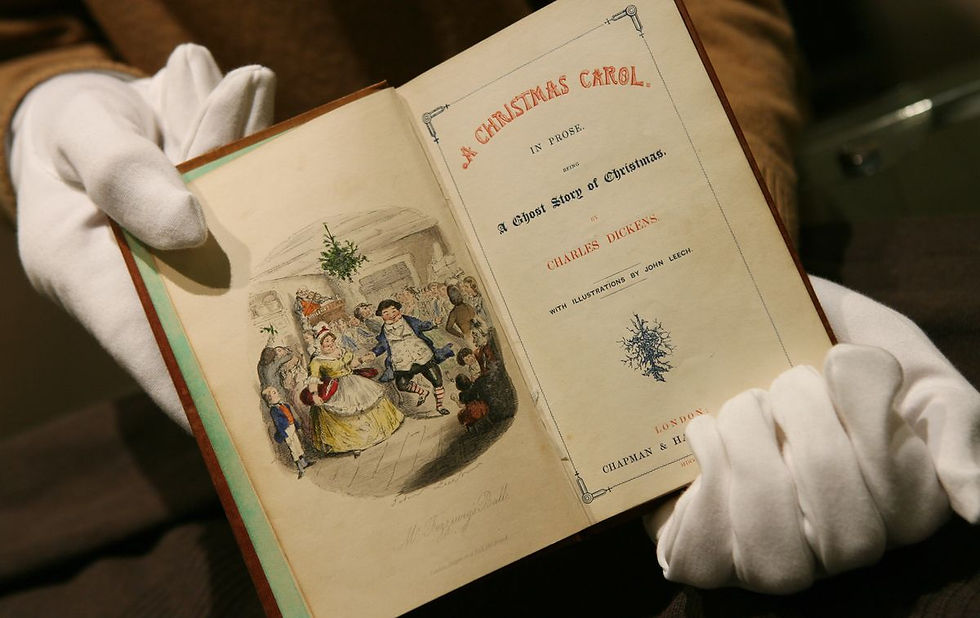
But due to high printing costs, Dickens didn’t make as much from the book as he had hoped. Also, copyright laws were basically non-existent, so countless reprints and stage adaptations of A Christmas Carol were produced, and Dickens saw no money from them. So in an effort to capitalize on the success and popularity of the novella, he adapted the story himself and began performing the story in public readings. This one-man show, which began in 1853 with money going to charity, eventually grew into a tour of paid readings.
Between 1853 and 1870 he offered 127 performances of A Christmas Carol. During one stretch of 3 months touring in America, he made £19,000, which equates to more $4 million in today’s money—more than he’d ever made in his lifetime. These readings showcased Dickens' storytelling prowess and also contributed to the enduring legacy of A Christmas Carol as a cherished and transformative holiday tale that has never been out of print.
PATRICK STEWART
Fast forward 143 years, when famed Shakespearen actor Patrick Stewart happened upon one of these printings. He was in Derbyshire, England for the filming of a period movie called Lady Jane, which also starred Helena Bohnam Carter, Cary Elwes, and Joss Ackland. After having read through all of the newspapers and magazines in the hotel, Stewart discovered a slim volume of A Christmas Carol on the bookshelf, realizing that he had never really read it. He expected a syrupy Victorian fairy tale but instead he got a powerful narrative of cruelty and redemption. Stewart was so profoundly moved that he created an adaptation of the story for solo performance. The original three-hour rendition was exclusively presented at a parish church in his hometown of Mirfield, West Yorkshire, as a charitable effort to support the restoration of their church organ.
A year later, Stewart was cast in the role that would change the course of his career, Captain Jean-Luc Picard on the syndicated TV show Star Trek: The Next Generation. The success and popularity of the show kept him busy, and so it wasn't until the second season that Stewart revisited and redeveloped Christmas Carol into a more compact, yet still full-length, solo show as he explained on Regis and Kathie Lee:
“It evolved at a time when I realized that Star Trek was going to last for a year or two, and I knew that I had to find some way of keeping in touch with the live theater—keep those juices flowing. And I suppose ultimately act as ego too, you know that the one-man show is the final ego trip. And then it began as a simple reading and it grew…”
Now, of course there have been numerous versions of Dickens’ tale on stage and screen, but what set Stewart’s adaptation apart was its authenticity—very much in keeping with those original presentations done by Dickens. In fact, Stewart was able to access the various reading versions of Dickens' works still available and could see how the writer's performances of A Christmas Carol changed over the years. Thus, Stewart was able to capture the essence of the author himself and incorporate the author's voice into the presentation of the story as a whole.
To help him with this adaptation and reassure him of its accuracy, Stewart approached Professor Albert Hutter, a Dickens scholar at the University of California in Los Angeles. And so, the inaugural presentation took place at Hutter's home, attended by approximately 18 individuals, with Stewart being grateful for the positive response.

Yet with all his television commitments, it would take a few years before Stewart could actually bring a more realized version to the stage. And so in the lead-up to its Broadway debut in 1991, A Christmas Carol underwent a pre-Broadway tour, stopping in Santa Barbara, Salt Lake City, Anchorage, and Pasadena on four consecutive weekends.
“Now, it's not a reading, it's a fully performed show, in which I'm narrator and we've never been too clear but somewhere in excess of about 40 different characters, all of whom are fully created. Now, I have no costume, no props, I have 5 rather sad bits of painted furniture but a brilliant lighting plot which helps to create location and mood and the rest of it really is up to me. I try to make the characters as vivid and yet as real as possible."
BROADWAY PRODUCTIONS
And on December 19th—the 148th anniversary of the publication of A Christmas Carol—Stewart’s one-man stage version opened at the Eugene O’Neill Theatre. It also marked Stewart's return to Broadway after 21 years, and he compared the overall experience of performing and staging A Christmas Carol to being a roller coaster and a merry-go-round at the same time because of its pace.
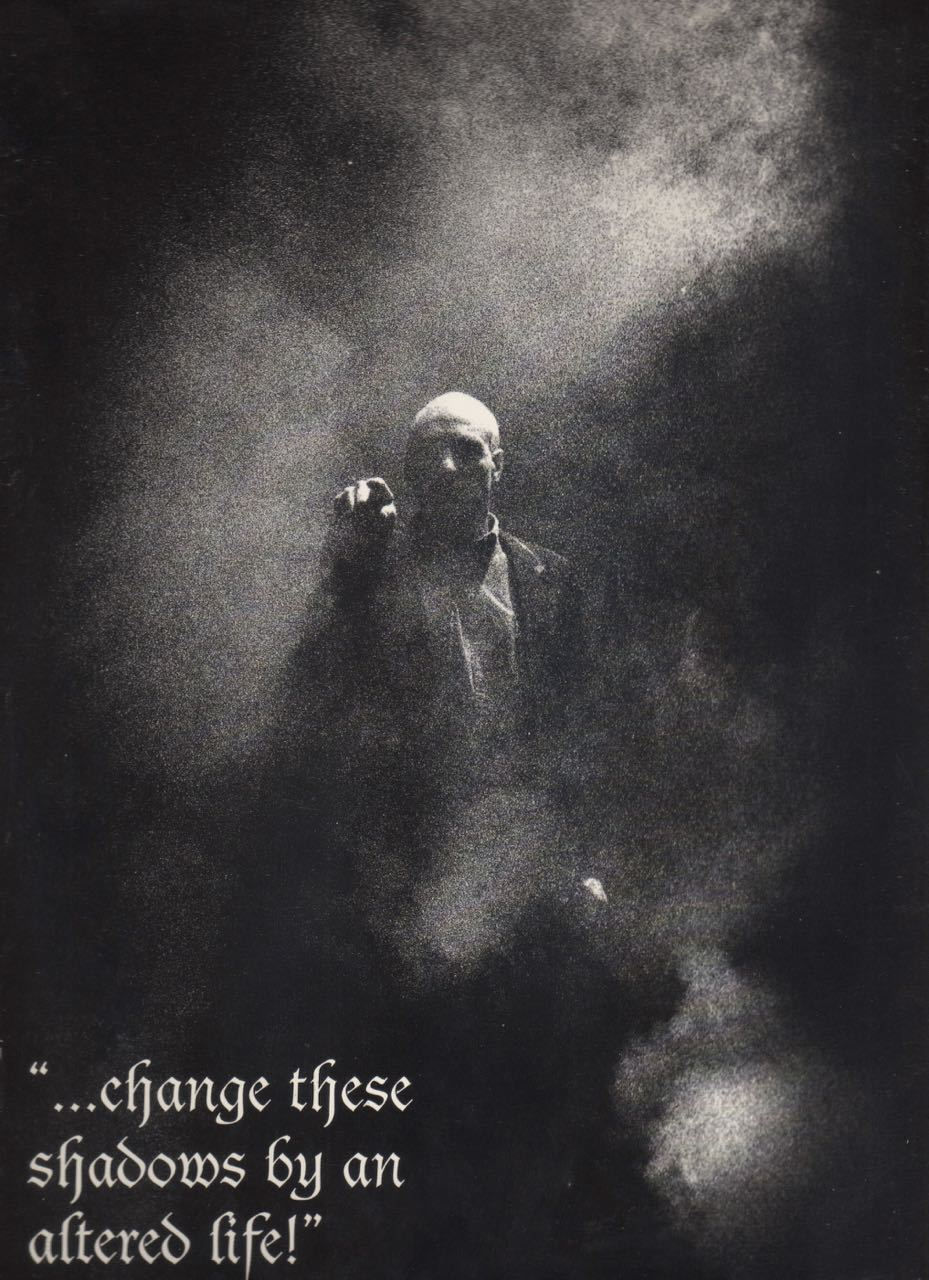
“Of all the voices, Scrooge was the most difficult, because the whole story stands or falls by Scrooge. And at the beginning I was playing him I think a little two-dimensionally. He was somewhat of a caricature until a good friend of mine, Roger Rees, who had been who had been helping with the show, pointed out that Scrooge was me, that Scrooge exists in all of us in other words, and so he had to become the most natural, the most centered person in the show.” - Patrick Stewart
Well, those 14 rollercoaster performances in 1991 helped Stewart walked away with the Drama Desk Award for Outstanding One-Person Show. He would return to Broadway the following Christmas season at the Broadhurst Theatre for 22 performances, and a London production in 1993 at the Old Vic Theatre (where he won the Olivier Award for Best Entertainment).
Star Trek: Next Generation had its series finale in May 1994, and later that year Stewart was back on Broadway again for 18 performances of A Christmas Carol at the Richard Rodgers Theatre. A couple of years later, he would perform the show again in Los Angeles in 1996, and the LA Times was there:
“The genius of a performance that does not need makeup, a costume change, a backdrop, or anything in the way of props, except for that all-important book and a few modest sticks of plain wooden furniture…What Stewart does bring to the stage is his own virtuosity. By taking away the razzmatazz usually associated with theatrical ‘magic,’ he is able to fill the stage all the more richly with his own penetrating and versatile voice, his mastery of gesture, and facial expressions that instantly summon fear, delight, longing, and awe.”
Due to the various Star Trek films throughout the 1990s and the beginning of the X-Men franchise in 2000, A Christmas Carol was put on the shelf for awhile. But that doesn’t mean Stewart left theater behind. During this period he played Prospero in The Tempest on Broadway in 1995. Two years after that he took the role of Othello with the Shakespeare Theatre Company in Washington, D.C. This was called a "photo negative" production with Stewart as a white Othello and the rest of the cast being all-black.
He came back to Broadway in 2000 for a limited-run revival of Arthur Miller’s The Ride Down Mt. Morgan, which had its own controversy as Stewart publicly chastised the producers in a Saturday evening curtain speech, which made subsequent news headlines. The Shubert Organization board chairman Gerry Schoenfeld in turn filed a complaint with Actors' Equity Association.
Well, a year and a half later, on September 11, 2001 Stewart was back in England preparing for a production of J.B Priestly’s play Johnson Over Jordan. However, Stewart told Playbill “It was a very important production, but I didn't want to be there. I wanted to be in New York City, as did my wife, who is from New Jersey.” As the events and aftermath of September 11th continued to unfold, there was a collective sense of helplessness that I’ve touched on in a previous episode. It was also during this time that a friend of Stewart’s casually expressed a desire for him to revive A Christmas Carol that year.
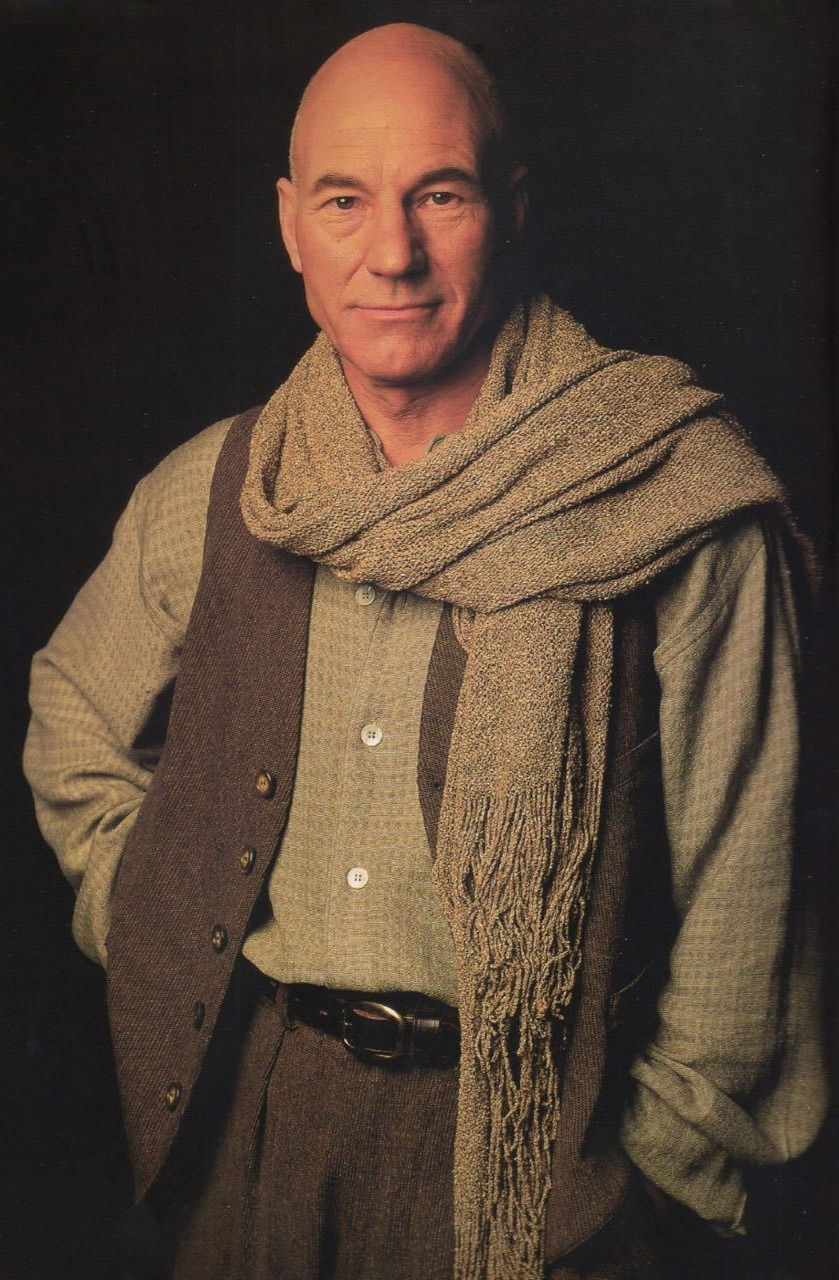
After mulling over the idea for about three weeks, Stewart recognized this as an opportunity to contribute. But with commitments already lined up to work on Star Trek video games and the next major motion picture, he reached out to Paramount, which gave him approval to finally come to New York, so that he could bring A Christmas Carol back to Broadway. This time with proceeds going to charity as well as one performance specifically earmarked for the Actors' Fund's Sept. 11th Campaign. This production was not only for a good cause but it gave Stewart a chance to revisit some of his favorite characters.
“Oh, I love being old Joe, who is the nasty, vile, rag-and-bone man (goes into impression): 'Come in my parlour! Come in, sit down, you couldn't have come to a better place!' I have a great fondness for old Joe. And there's a char woman called Mrs. Stelvo, also not very attractive. But you know, there isn't a character in this that actually I don't have an affection for and luckily, I see them very vividly, they're three-dimensional for me so I just have to slip inside them for the few moments that I'm on stage.” - Patrick Stewart
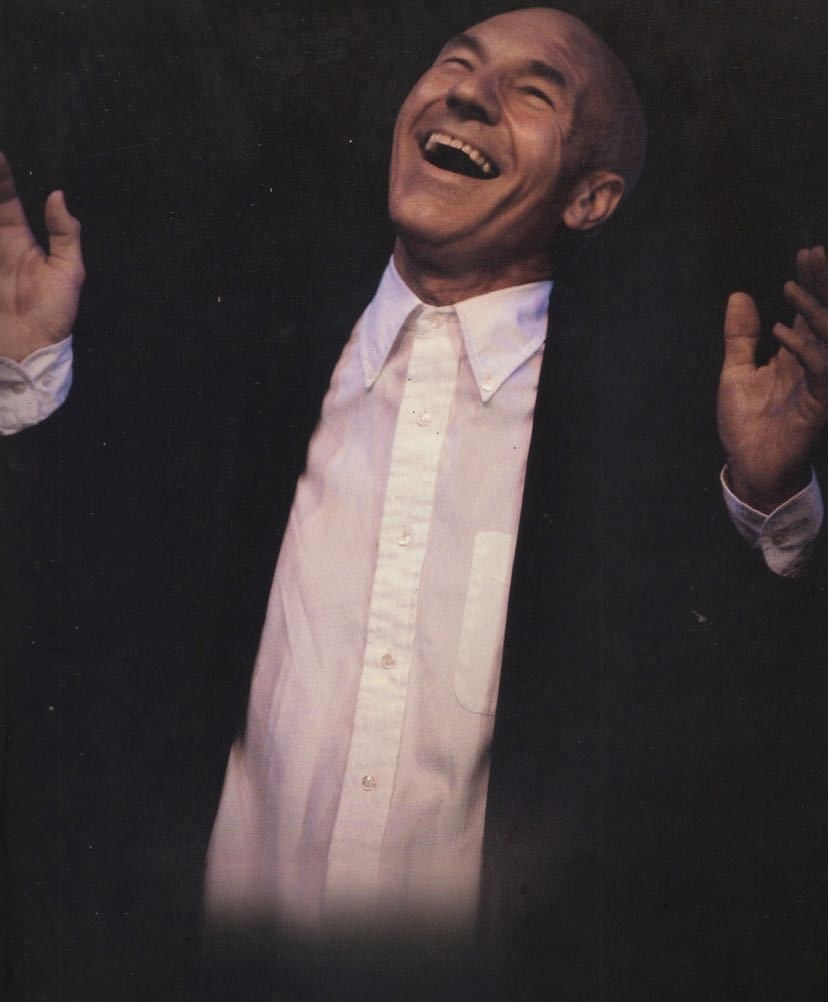
Of his four Broadway productions, this one at the Marquis was the shortest. It opened on December 24th with no previews, and only lasted 8 performances, closing a week later on December 30, 2001. Yet even still, its weekly gross was double that of his other three sold-out productions. So there were plenty of funds going to support the Coalition for the Homeless and Food For Survival as well as the victims of 9/11.
What’s ironic is that Stewart considers himself a bit of a Scrooge, some of that from his own difficult upbringing and lack of joy around the holiday season, but also because of the stress and anxiety it gives him. Nonetheless, he certainly did plenty of giving to the grateful audiences who came to see his one-man rendition of this Christmas classic.
”I am also telling Patrick Stewart's story, when I tell the story of 'A Christmas Carol'. I hope I've never been quite as mean, or quite as unloving, or quite as anti-social as Scrooge is but there have been times where I have been all of those things. It's also, I suppose, some people might say, a great ego trip too because it's all about me as an actor, thought there are many, many occasions when I would give anything to have another actor walk on stage and just for a few minutes take some of the responsibility of telling that story. It hasn't happened yet. I thought of putting an invitation out actually, to the actors in London, if anyone wants to come along one night and be Mrs Fezziwig or Tiny Tim, I'd welcome their arrival.” - Patrick Stewart

A kind acknowledgement goes to the Associated Press, Dickens Museum, and Regis and Kathie Lee for their resources that made this episode possible. Closing Night is a production of WINMI Media with Patrick Oliver Jones as host and executive producer of the show. Dan Delgado is the editor and co-producer, not only for this podcast but also for his own movie podcast as well called The Industry. Maria Clara Ribeiro is co-producer. Join us next time as another production makes its way to closing night.
Sources and materials used to create this episode...
Charles Dickens and the book:
Patrick Stewart:
The one-man show:
https://en.wikipedia.org/wiki/A_Christmas_Carol_%281988_play%29
1991 - https://www.deseret.com/1991/11/10/18959755/stewart-wrings-the-dickens-out-of-carol
1992 R&KL - https://www.youtube.com/watch?v=mdxiamlXo1Q
1993 LA Review - https://www.latimes.com/archives/la-xpm-1993-12-11-ca-580-story.html
2001 Marquis Production:
https://www.playbill.com/article/playbill-on-lines-brief-encounter-with-patrick-stewart-com-101570
https://www.playbill.com/article/carols-ring-throughout-the-land-and-twice-in-nyc-com-100488
Grosses - https://www.broadwayworld.com/grosses/A-CHRISTMAS-CAROL

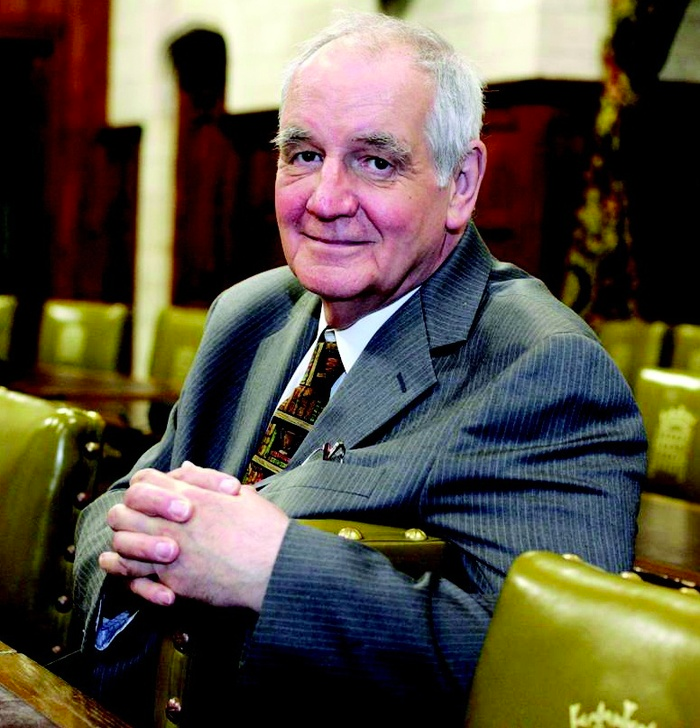









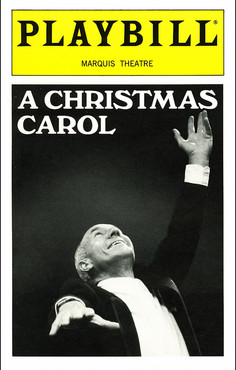

Comments